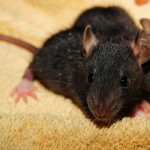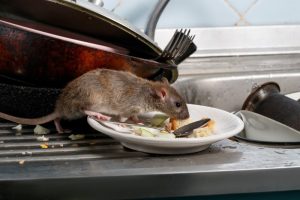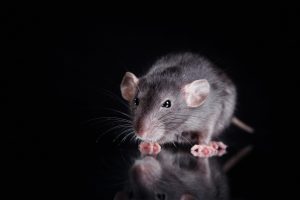
Rodent Control
Few things are as distressing as discovering mice or rats in your home, whether you notice mysterious noises in the walls, unexpected movement behind furniture or even droppings. Rodents like rats and mice often carry diseases, so it’s essential to get rid of them as soon as possible.
That’s where the professionals come in. At EPC – Enviro Pest Control, our expertise in rat and mice control spans from minor home infestations to major commercial challenges in factories, hotels, restaurants, offices, cafes, and beyond.
Rat and Mouse Removal in Melbourne
EPC – Enviro Pest Control has years of experience in residential and commercial pest management, identifying and solving rodent infestations for our clients. Our staff are trained specialists when it comes to swift and safe rodent pest control, understanding the importance of an efficient and effective solution.
For commercial clients, we know that a reliable, discreet pest control service is important to your business. EPC – Enviro Pest Control Pty Ltd is registered under the Victorian Department of Health. We comply with all industry rules and regulations. If you need to speak to a professional about rat or mouse treatments in Melbourne, you can reach our team through our online booking form, or by calling (03) 9988 5066 now.
Identifying Common Rodents (Rats and Mice) in Melbourne
Australia has more than 60 native rodent species and three introduced pest species. However, the three most commonly found rodent pests in Melbourne homes and businesses include the house mouse, the Norway rat and the roof rat.

House Mouse(Mus musculus)
Despite its name, the house mouse is not restricted to houses or buildings. They are found throughout Australia and have adapted to a wide range of environmental conditions.
- Light brown to dark grey on the body, with a light cream belly
- Adults have a body length of about 75 mm and weigh up to 30g
- The tail is about as long as the body and is almost hairless
- They have large ears, small eyes and long whiskers
Norway Rat (Rattus norvegicus)
Norway rats (also known as the common rat, sewer rat or brown rat) can often be found nesting in the city near bins and buildings. The Norway rat will gnaw on almost any material to prevent excessive teeth growth.
- Dark grey to brown fur with a light grey or brown belly (can also be albino or jet black)
- Known to burrow deep in the ground near walls or objects to avoid predators
Roof Rat (Rattus rattus)
Also known as the black rat or ship rat, this species was most likely introduced to Sydney with the arrival of the First Fleet. Although they are commonly found in roofs, they can also appear in schools, childcare facilities, factories and more.
- Brown or grey fur with a long pointed head, large thin ears and a cream or white belly
- Roof rats are nocturnal, however, they are often seen during the day
Breeding and Life Cycle
Rodents can and will breed throughout the year if conditions are suitable. A single female rodent can result in thousands of descendants in as few as six months.
The house mouse, Norway rat and roof rat all live for approximately 9 to 12 months. They have a gestation period of about three weeks and give birth to multiple young per litter (between 6 and 14 depending on the species), having several litters a year.
The house mouse and Norway rat reach sexual maturity within two months. Because of this, the presence of rodents, if left untreated by residential or commercial pest control, can quickly multiply into an unmanageable infestation, posing a significant risk to the health and safety of humans and domestic pets who cohabit the area.
Signs of Rodent Infestation
The most obvious sign that you need rat or mice control experts is, of course, locating a living or dead rodent. Another tell-tale sign is the presence of droppings, which are commonly found along the edges of rooms or under furniture.
Rats and mice can live and nest within buildings indefinitely, provided they have access to food and water. They are most active at night. Other signs of infestation include:
- Noise: scratching, fighting, squeaking, clawing and gnawing are often heard during the night in walls, cupboards, ceilings and underfloors
- Gnawing: rodents gnaw a wide variety of materials including woodwork, electrical cables, new plumbing pipes and food containers
- Travel paths: greasy markings found on surfaces due to continual contact with dirty rodent fur
- Burrows: found in creek banks, along walls, under buildings, in stacked materials and in roof insulation
Rats and mice prefer to hide and remain out of sight, so if one is seen out in the open, it may be a sign that they have overpopulated their nest and are now being forced into the open. At this point, the only viable option is to call professional exterminators to deal with the infestation as soon as possible.
Disease and Contamination
Rats and mice are known carriers of many diseases. They will always ensure their nest is within close proximity to a good food source, drawing them to human populations due to the abundance of food – both fresh food and scraps.
It is essential to keep rats and mice away, as they can easily contaminate our food, homes and businesses with faeces, urine and hair. In one year, a single mouse will produce approximately 18,000 faecal droppings. They carry fleas, mites and even ticks. Mice are also known to store food which can then lead to insect infestations.
Considering the biological hazard posed by rodents, it is crucial that you contact a professional rodent control service, such as EPC – Enviro Pest Control, as soon as you suspect an infestation.

